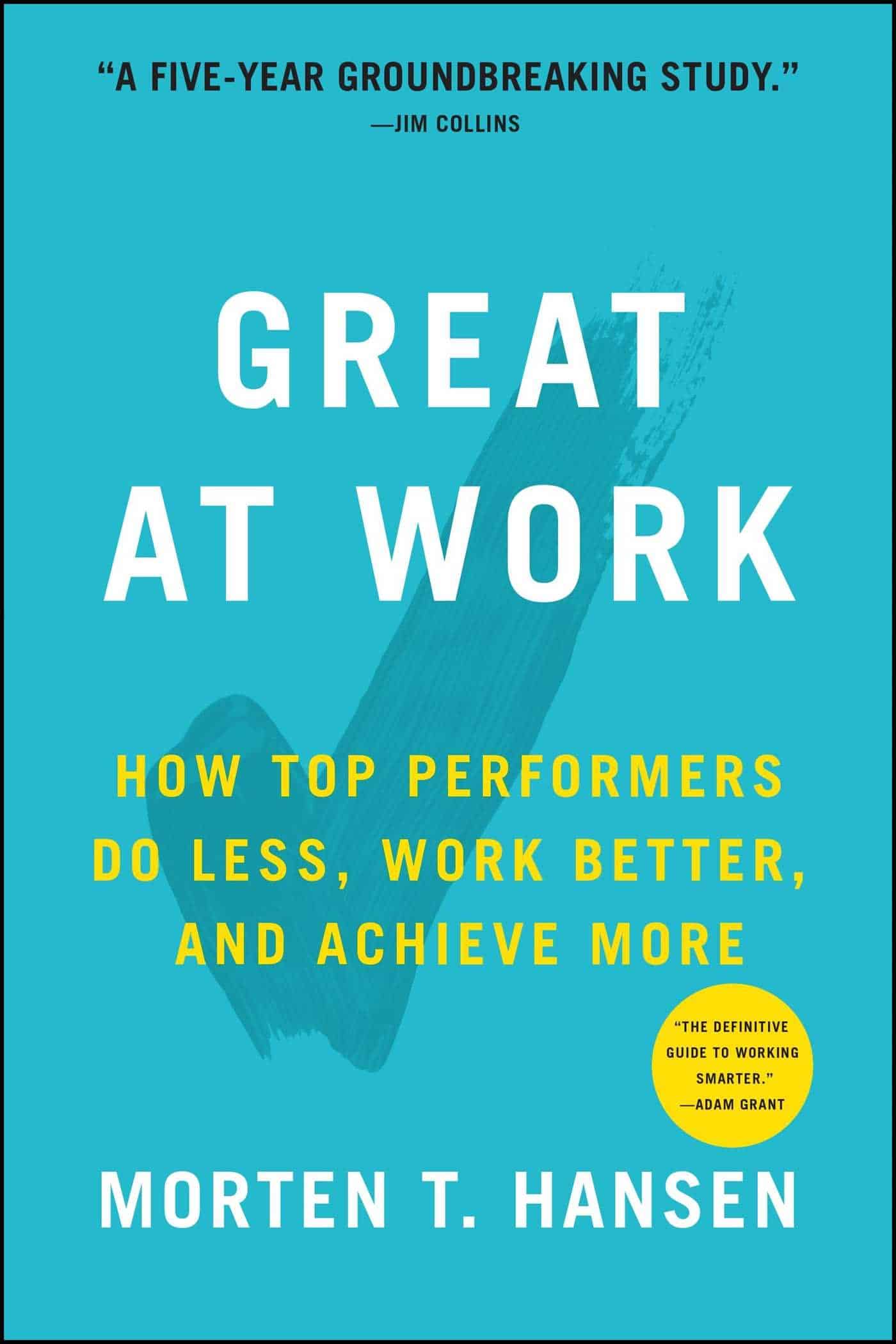Great at Work
How Top Performers Do Less, Work Better and Achieve More
Author: Morten T. Hansen

No available rating

👍GetAbstract Rating: 9/10

GetAbstract Summary Preview
For his latest book, Great at Work: How Top Performers Do Less, Work Better and Achieve More, Morton Hansen spent five years researching more than 5,000 employees in dozens of industries, to better understand the deceptively simple question of why some people perform better at work than others do.
Thousands of hours and millions of dollars are spent on recruitment, onboarding, skills training, and leadership development to produce model employees capable of extraordinary individual performance — those elusive star performers who will set the top-performance benchmark for their department or their entire company. Hansen’s research challenges the assumption that it’s just a matter of hiring people willing to work “longer and harder.” He presents seven distinct practices that will enable employees to embrace a growth mindset and find ways to work smarter rather than harder:
Mastering Your Own Work
- Do Less, Then Obsess: Taking on more responsibility in the hope of proving your worth is, the author argues, a flawed strategy because it misses the focus component. As a result, you spread yourself too thin, devoting too little attention to each responsibility. Better to “wield the razor” and shave away as many unnecessary commitments as you can.
- Redesign Your Work: Hansen’s research demonstrates that beyond a work week of 65 hours, adding more hours causes performance to decline. Taking the time to analyze the pain points of your work — the administrative “fluff” and low-value inefficiencies — allows you to better manage the “value equation” to create “output that benefits others tremendously and that is done efficiently and with high quality.”
- Don’t Just Learn, Loop: The author challenges the traditional 10,000 hours of practice needed for mastery by proposing a learning loop in which the quality of each experimental iteration generates more improvement than simple repetition does. Making small modifications to your daily work and then immediately incorporating feedback supports a much faster improvement cycle.
- P-Squared (Passion and Purpose): Doing work you love is believed to guarantee personal fulfillment and success, but Hansen’s research reveals that those who match that passion with purpose perform at a significantly higher level. Finding something that you love to do and that contributes value to others brings more focused energy to your work, allowing you to get more done in each hour of work.
Mastering Working with Others
- Forceful Champions: Pushing new projects through by sheer force of will and perseverance is inefficient. Star performers understand the value of inspiring others to support their cause and then applying “smart grit” to adjust and tailor their tactics to break down opposition.
- Fight and Unite: Eighty percent of Hansen’s research respondents identified leading teams as being important in their jobs, but most of them complained that team meetings weren’t productive. The “work harder” approach is to keep meeting until the team “gels” at some point. The “work smarter” approach is to encourage positive team debate to build unity sooner.
- The Two Sins of Collaboration: Organizations and employees swing between two extremes: “under-collaboration” and “over-collaboration.” Time-sensitive projects are often pushed through with little opportunity for input, whereas projects that are deemed to need “buy-in” are delayed by too much input. Hansen’s research argues the case for “disciplined collaboration,” where the need for and amount of talking is established up front as a project parameter.
Hansen started with the question of why some employees perform better than others. The result is a relevant, insightful and rigorously empirical study that draws on a wide range of fascinating examples designed to help anyone looking to maximize their time and performance.
About The Author & Review
About The Author:
Morten T. Hansen, PhD, is a management professor at the University of California, Berkeley and is on the faculty at Apple University. He also wrote Collaboration and co-authored the New York Times bestseller Great by Choice with Jim Collins.
Review:
Business professor Morten T. Hansen launched a massive research project into what “working smarter” actually means. He tracked the practices and performance of 5,000 managers and employees and distilled the data into seven top-performance principles. The principles are simple – for example, winnow your tasks to the important few and focus on them intensely. Putting them into practice amid the pressures of modern business is more difficult. Hansen offers illuminating stories of people who use his principles effectively. The co-author of Great by Choice with Jim Collins, Hansen is an engaging writer who can find the drama in even dry business histories as he explicates the principles that underlie his stories. Anyone in the work world will gain focus and efficiency by reading this manual.

